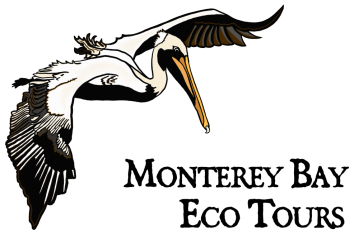EXPLORING ELKHORN SLOUGH’S BIRD HABITATS: DIVERSE ECOSYSTEMS FOR AVIAN DIVERSITY

Elkhorn Slough is a diverse and vibrant ecosystem that provides a variety of habitats for numerous bird species. Each habitat type offers unique conditions that cater to the specific needs of different avian inhabitants. Here’s an overview of some of the habitats and the bird species that thrive within them at Elkhorn Slough:
Salt Marshes: Salt marshes are vital habitats within Elkhorn Slough, characterized by the presence of salt-tolerant plants and tidal influences. They provide important feeding and breeding grounds for various bird species, including:
- Clapper Rail: These secretive birds are often found in dense vegetation near the water’s edge, using their distinctive calls to communicate within the marsh.
- Black-necked Stilt: These elegant waders with striking black-and-white plumage can be seen foraging for aquatic invertebrates in shallow water.
Mudflats and Shallow Waters: Mudflats and shallow waters are essential foraging areas for many shorebirds and waterfowl, offering a bounty of food resources. Some bird species commonly spotted in these habitats include:
- Willet: With its distinctive piercing call, the Willet is known for probing the mud for crabs, worms, and other small prey.
- Marbled Godwit: Recognized by its long, slightly upturned bill, the Marbled Godwit feeds by probing the mud for invertebrates.
Tidal Creeks and Channels: Tidal creeks and channels provide important navigation routes and sheltered areas for various bird species. Among them are:
- Snowy Egret: These elegant white herons are often seen wading in shallow waters, using their sharp bills to hunt for fish and small aquatic creatures.
- Black-crowned Night-Heron: Known for its nocturnal habits, this heron can be spotted along tidal creeks during the day, hunting for fish, amphibians, and invertebrates.
Open Water and Open Ocean: The open waters of Elkhorn Slough and the adjacent Monterey Bay attract a variety of seabirds and waterfowl that rely on these habitats for feeding and resting. These include:
- Common Loon: Often seen diving for fish in the open water, the Common Loon is a skilled swimmer and a true symbol of the coastal environment.
- Western Gull: These opportunistic gulls can be found scavenging for food along the shoreline and over the open water.
Upland Habitats: Upland habitats surrounding Elkhorn Slough also play a role in supporting bird species. These areas provide nesting sites, perches, and resting spots for birds such as:
- Northern Mockingbird: These songbirds are known for their impressive vocal mimicry, often perching in shrubs and trees to sing their melodious tunes.
- White-tailed Kite: A graceful raptor, the White-tailed Kite can be seen hovering over grasslands before diving down to catch small mammals.
Conclusion: The diverse habitats of Elkhorn Slough create a tapestry of environments that accommodate a wide range of bird species. From the intricate ecosystems of salt marshes to the expanses of open water, each habitat provides essential resources for these avian inhabitants. Observing the interactions between birds and their environments at Elkhorn Slough highlights the delicate balance of nature and the importance of preserving these habitats for generations to come.

A captivating aerial view of Elkhorn Slough showcases the sheer beauty of nature’s artistry. The waterways wind gracefully through the landscape, creating an enchanting spectacle of tranquility and life. In the foreground, a striking contrast emerges as the vibrant yellow lupine flowers steal the spotlight, their delicate blooms painting the scene with a burst of color. This harmonious blend of winding waters and vibrant flora unveils the raw magnificence of Elkhorn Slough, inviting viewers to immerse themselves in the wonders of this breathtaking sanctuary.
